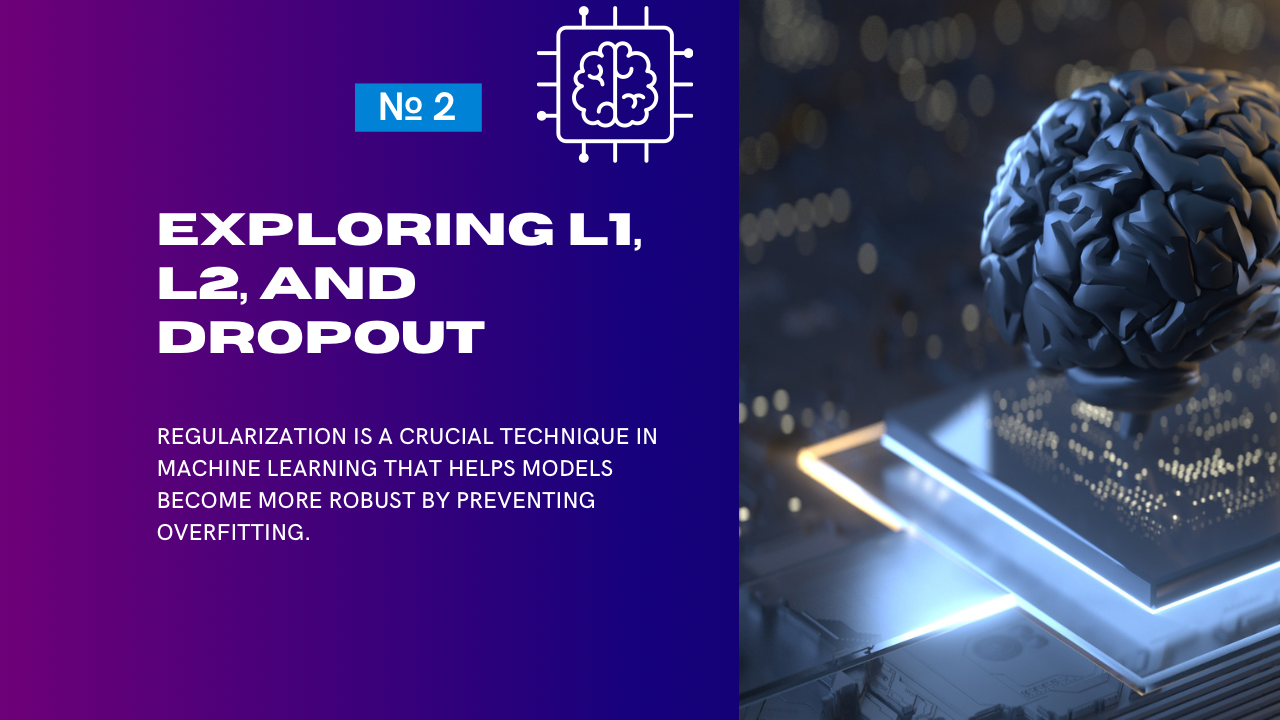Regularization is a crucial technique in machine learning that helps models become more robust by preventing overfitting. Overfitting occurs when a model fits the training data too closely, including its noise and random patterns, which reduces its ability to generalize to new data. In this article, we’ll discuss why regularization is important and explore three popular techniques: L1, L2, and Dropout.
What is Overfitting?
Overfitting happens when a model learns not only the underlying patterns in the training data but also the noise and outliers. This results in poor performance on unseen data. Symptoms of overfitting include:
- High accuracy on the training dataset.
- Low accuracy on the validation or test datasets.
To combat overfitting, regularization introduces constraints or modifications during training to guide the model toward simpler and more generalizable solutions.
Why Regularization is Critical
Without regularization, highly flexible models (e.g., neural networks) can easily fit complex datasets, but this can lead to overly complex models that memorize rather than learn. Regularization helps to:
- Reduce model complexity: By discouraging overly large weights or complex patterns, it ensures the model focuses on meaningful relationships.
- Improve generalization: A simpler model is more likely to perform well on new, unseen data.
- Prevent over-reliance on specific features: Regularization distributes learning more evenly across all input features.
Types of Regularization
1. L1 Regularization (Lasso Regression)
L1 regularization adds the absolute value of the weights to the loss function:
[
\text{Loss} = \text{Original Loss} + \lambda \sum |w_i|
]
- Effect: Encourages sparsity by pushing some weights to exactly zero, effectively performing feature selection.
- Use case: When you suspect that only a subset of features is important and want a simpler model.
- Advantages: Results in interpretable models since irrelevant features are removed.
- Disadvantages: May discard useful but weakly correlated features.
2. L2 Regularization (Ridge Regression)
L2 regularization adds the squared value of the weights to the loss function:
[
\text{Loss} = \text{Original Loss} + \lambda \sum w_i^2
]
- Effect: Penalizes large weights but doesn’t push them to zero. Instead, it reduces their magnitude, making the model more stable.
- Use case: When all features are important but need to be balanced to prevent overfitting.
- Advantages: Works well with collinear features and is computationally efficient.
- Disadvantages: May struggle with datasets where only a few features are highly relevant.
3. Dropout Regularization
Dropout is a technique specific to neural networks. During training, dropout randomly “drops” (sets to zero) a fraction of the neurons at each layer:
[
\text{Probability of dropping a neuron} = p
]
- Effect: Prevents over-reliance on specific neurons by forcing the network to learn redundant representations.
- Use case: Ideal for deep learning models, especially when working with large, complex datasets.
- Advantages: Simple and highly effective at reducing overfitting.
- Disadvantages: Requires careful tuning of the dropout rate (p).
Comparing L1, L2, and Dropout
| Technique | Key Effect | When to Use |
|---|---|---|
| L1 | Sparsity, feature selection | When you suspect many irrelevant features |
| L2 | Smooth weight reduction | When all features contribute to the outcome |
| Dropout | Neuron redundancy in neural nets | For deep learning with complex datasets |
Choosing the Right Regularization Technique
The choice of regularization depends on your data and the problem you’re solving:
- Use L1 if you want a sparse model or are working with high-dimensional data.
- Use L2 for most cases where features are equally important but the model needs stabilization.
- Use Dropout for deep learning models to prevent co-adaptation of neurons.
It’s also common to combine regularization techniques, such as using L2 regularization (weight decay) alongside dropout in neural networks.
Conclusion
Regularization is essential for building robust, generalizable models. Techniques like L1, L2, and Dropout help mitigate overfitting by constraining model complexity and encouraging simpler, more interpretable solutions. By understanding when and how to use these techniques, you can improve your machine learning models and achieve better performance on unseen data.
